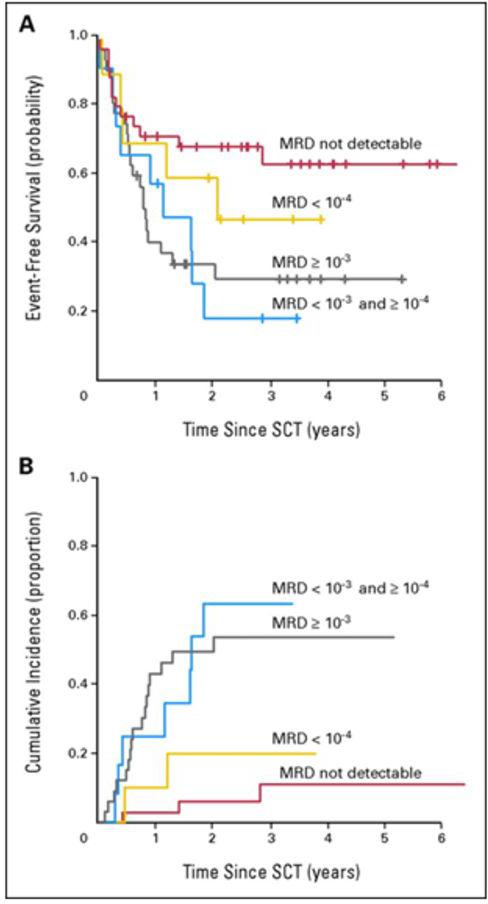Figure 1. 1a. Event-free survival probability (pEFS) and 1b. cumulative incidence of subsequent relapse (CIR) in patients with first (n = 77) or second (n = 14) relapse of acute lymphoblastic leukemia by minimal residual disease (MRD) status before allogeneic stem-cell transplantation (SCT).
MRD > 10−3 leukemic cells: n = 33; censored, n = 11; deaths, n = 5; relapses, n = 17;1a. pEFS (4 years) = 0.31 ± 0.09; 1b. CIR (4 years) = 0.54 ± 0.09. MRD < 10−3 and ≥ 10−4 leukemic cells: n = 12; censored, n = 3; deaths, n = 2; relapses, n = 7; 1a. pEFS (3.5 years) = 0.19 ± 0.12; 1b. CIR (3.5 years) = 0.64 ± 0.16. MRD < 10−4 leukemic cells: n = 10; censored, n = 5; deaths, n = 3; relapses, n = 2; 1a. pEFS (3.5 years) = 0.48 ± 0.16; 1b. CIR (3.5 years) = 0.20 ± 0.14. MRD not detectable: n = 36; censored, n = 24; deaths, n = 9; relapses, n = 3; 1a. pEFS (4 years) = 0.64 ± 0.09; 1b. CIR (4 years) = 0.11 ± 0.06. 1a. EFS, log-rank, P = .036. 1b. CIR, Gray, P < .001.
From Bader P, Kreyenberg H, Henze GH, Eckert C, Reising M, Willasch A et al. Prognostic value of minimal residual disease quantification before allogeneic stem-cell transplantation in relapsed childhood acute lymphoblastic leukemia: the ALL-REZ BFM Study Group. J Clin Oncol 2009; 27(3): 377-84.

